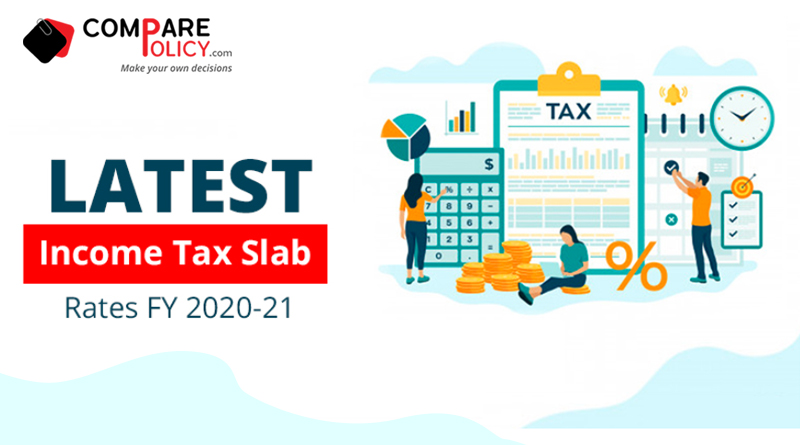Latest Income Tax Slab Rates FY 2022-23
The parameters used to determine the individual’s tax liability can vary depending on the type and amount of income, age, residence, investments, deductions by an employer, etc. Individuals who earn an income are required to pay income taxes and these individual incomes are categorized into groups based on certain upper and lower limits. These categories of different taxpayers are slotted into brackets or slabs. The amount of tax that they are liable to pay is determined by their allotted slabs. As a person’s income increases or decreases, they will fall into different slabs. Income at different levels or bands is taxed at different rates that are known as Income tax slab rates.
Table Content
Budget
Indian Govt. again released the Budget for the year 2022-23 and this time they are focused more on Domestic empowerment, their Four major priorities are “PM Gatishakti” which is the Seven engines driven by PM known as ” Roads, Railways, Airports, Ports, Mass Transport, waterways, and logistics infrastructure and “Inclusive Development” is all about Skill developments, MSME, Agriculture , Education, Health, etc. and the third one is “Product enhancement and investment, sunrise opportunities. Sunrise transition and climate actions, and Financial management
Till the previous year, only 2.5 percent of people used to pay tax. Now after the 2022-23 Budget announcement it is recorded that 8 Crore people out of 130 Crore 5% total pay tax, If we look at the figures for December month 2017, it is known that the number of taxpayers was 3 crore 25 lakh at that time. This is one of the reasons why the Indian government continuously did change in tax slab, tax is the first service that plays an important role in the development of any country and the government also wants to increase the number of taxpayers. There is a quote “when the ghee does not come out of the straight finger, then the finger has to be bent”, and the government is doing exactly the same in the matter of tax.
Tax Exemptions and Deductions
The Income Tax Act of 1961 allows individuals to avail of several tax exemptions and deductions that can help them to lower their tax burden. These exemptions are on House Rent Allowance (HRA), Leave Travel Allowance (LTA), interest from post-office savings accounts, investments in certain tax-saving instruments, etc.
Other tax-saving avenues include health insurance premiums, deductions on interest received in post-office/bank savings accounts held by certain age groups, etc.
New Slab Rates For FY 2022-23
Under the existing system, there were only 4 basic slabs:
- Income: Upto Rs 2,50,000
- Income: Between Rs 2,50,001 – 5,00,000
- Income: Between Rs 5,00,001 – 10,00,000
- Income: Above 10,00,001
The annual budget of 2020 has introduced certain new slabs with reduced rates without 70 categories of exemptions and deductions. The basic exemption limit for individuals depends on her/his age and residential status. Individuals with net taxable income up to Rs 5 lakhs are eligible for a Rs 12,500 rebate under both old and new taxation regimes.
The following two tables show the different rates pre- and post-Budget 2020-21.
| Annual Income | Slab Rates | Existing Tax Regime before Budget 2020 | Slab Rates | New Tax Regime | Benefits in New Tax Regime |
|---|---|---|---|---|---|
| 2,50,000 | – | – | – | – | – |
| 5,00,000 | 5%** | – | 5%** | – | – |
| 7,50,000 | 20% | 62,500 | 10% | 37,500 | 25,000 |
| 8,00,000 | 20% | 72,000 | 15% | 45,000 | 27,000 |
| 10,00,000 | 20% | 1,12,500 | 15% | 75,000 | 37,500 |
| 12,50,000 | 30% | 1,87,500 | 20% | 1,25,000 | 62,500 |
| 15,00,000 | 30% | 2,62,500 | 25% | 1,87,500 | 75,000 |
| 50,00,000 | 30% | 13,12,500 | 30% | 12,37,500 | 75,000 |
| 75,00,000 | 30% | 20,62,500 | 30% | 19,87,500 | 75,000 |
| 1,00,00,000 | 30% | 28,12,500 | 30% | 27,37,500 | 75,000 |
| 1,50,00,000 | 30% | 43,12,500 | 30% | 42,37,500 | 75,000 |
| 2,00,00,000 | 30% | 58,12,500 | 30% | 57,37,500 | 75,000 |
| 3,50,00,000 | 30% | 1,03,12, 500 | 30% | 1,02,37,500 | 75,000 |
| 5,00,00,000 | 30% | 1,48,12,500 | 30% | 1,47,37,500 | 75,000 |
| 5,50,00,000 | 30% | 1,63,12,500 | 30% | 1,62,37,500 | 75,000 |
** No tax up to Rs 5,00,000 taxable income because you can avail of rebate under Section 87A
The above table shows that under the new tax regime of Budget 2020 there are several changes. The new system is optional and will co-exist with the older version. The basic exemption income slab in the case of a resident of India aged 60 and above/80 and above continues to remain the same at Rs 3 lakhs and 5 lakhs respectively in the existing tax regime.
Important Sections
As many as 70 commonly used deductions and tax exemptions have been removed in Budget 2020 for salaried employees who choose to file under the new tax rate. Section 80C refers to investments made in PF and NPS and Section 80D refers to payments made as health insurance premiums and the standard deduction of Rs 50,000 is proposed to be removed. But there is an important benefit that can still be claimed by those individuals who file under the new tax regime – Budget 2020 (AY 2021-22) has proposed a fiscal limit on the tax exemption contribution from the employer account to the employee’s NPS account.

